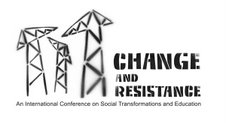Brit Ballangrud,
Buskerud University College
Background for this paper is the newest reform in Norway “Knowledge Promotion”. As a part of the reform the government has made a special strategy for developing competences needed for implementing the reform. This strategy for competence development is described in a special document from The Ministry of Education and Research. "Competence for Development. Strategy for Competence Development in Compulsory Schools 2005 – 2008” (my translation) (Utdannings- og forskningsdepartementet, 2005).
This paper deals with a discourse analysis of the document called the “The Competence Strategy”. The aim of this paper is; An Analysis of “The Competence Strategy” in the Norwegian Reform “Knowledge Promotion” by a description of the discourse of collaboration and learning.
Norman Fairclough has developed a three dimensional model for his approach, Critical Discourse Analysis (Fairclough, 1995). This model will be used for analysing the text of the Competence Strategy document as a discourse. The first part will be a description of the Competence Strategy and its meaning. Linguistic elements will be used. In the next part some patterns in the text describing the discourse, will be presented. In the last part the meaning and the rules of the discourse practice will be discussed in connection with analysing the learning discourse in the text. By using Fairclough`s model, the Strategy will be described as a common foundation for collaboration, with new roles for different actors and special responsibility for the school owner. The learning activities are learning for meeting practical challenges in the reform, and developing schools as learning organisations through leadership. In the text it may be find patterns connected to the text as genre. The Strategy as a common foundation is resting on different discourses. Not very much is said about the schools and schools leadership. They have a very little position in the text, but the text emphasizes leadership in learning processes bridging the schools learning. The analysis shows that it is possible to read the text from a socio cultural position and find elements in the Strategy which harmonize with a situated perspective.
Subscribe to:
Post Comments (Atom)

No comments:
Post a Comment